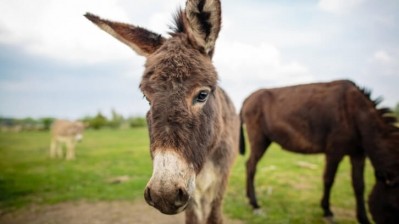Yak cheese healthier for heart than cheddar: study
than cheese from dairy cattle, suggests new research.
Cheese produced from yak's milk in Nepal was found to contain more polyunsaturated fatty acids (PUFAs) and conjugated linoleic acid (CLA) than Canadian cheddar cheese made from cow's milk, report the researchers in the Journal of Agricultural and Food Chemistry. The higher ratio of omega-3 to omega-6 fatty acids found in yak's cheese would mean it could be "classified as a healthy food in human diets," state the researchers from the University of Guelph (Canada), the Asia Network for Sustainable Agriculture and Bioresources in Katmandu, and Kantipur City College in Katmandu. Previously, evidence has linked an increased omega-3 to omega-6 intake ratio to improved health. Yak's cheese, made from the milk of the long-haired humped animals native to Tibet and the Himalayan region of south central Asia, is already commercially available, but has so far remained a delicacy, commanding high prices in the West. "Our results suggest that cheese from yak, grazed on Himalayan alpine pastures, might have a more healthful fatty acid composition compared to cheese manufactured from dairy cattle fed grain-based diets," wrote lead author Mamun Or-Rashid. Yaks versus dairy cattle A comparison of the fatty acid composition of cheese from yak's milk and Canadian cheddar cheese, found that the ratio of omega-3 to omega-6 fatty acids was over four times higher in yak's cheese (0.87 versus 0.2, respectively), report the researchers. Specifically, the total omega-6 content of yak's cheese and cheddar was 2.4 and 3.2 weight per cent, respectively, while the total omega-3 content was 2.11 and 0.66 weight per cent, respectively. "The alpha-linolenic acid (C18:3 n3) made up the majority of total omega-3 FA measured, and its content was higher in yak's cheese," wrote Or-Rashid. "Eicosapentaenoic acid (C20:5n3, [EPA]) and docosahexaenoic (C22:6n3, [DHA]) were also present in a higher percentage of total FA in yak's cheese than in dairy cattle cheese, and both come from alpha-linolenic acid metabolism in animal tissues." Furthermore, the content of CLA (cis-9, trans-11 CLA) and in the cheese from yak's milk was 4.2 times higher than that observed in the dairy cow cheddar. "On the basis of animal trial data extrapolation, 100 g of yak cheese in the human diet might be enough to supply the necessary amounts of cis-9, trans-11 CLA and trans-11 C18:1 to promote health," wrote the researchers. CLA are found predominantly in dairy products such as milk, cheese and meat, and are formed by bacteria in ruminants that take linoleic acids - fatty acids from plants - and convert them into CLA. Knowledge surrounding the health benefits of the acids has been increasing, with studies indicating potential benefits for weight management, bone health and possibly even cancer. "Further work needs to consider the effect of cheese from yak on human health," concluded the researchers. While the research is interesting it remains unlikely, given the high price of yak's cheese currently, that the health benefits will be accessible to a wider public. Interest in alternative milk sources A growing interest in other milk sources has seen reports emerging that trumpet the possibilities of milk from animals beside dairy cattle. Indeed, FoodNavigator.com has run several reports on the potential of camel, sheep and donkey milk. The latter was anecdotally reported to be the secret behind the long-life of the world's oldest women, Maria Esther de Capovilla from Ecuador, who passed away in 2006 at the ripe old age of 116. Source: Journal of Agricultural and Food Chemistry Volume 56, Pages 1654-1660 "Fatty Acid Composition of yak (Bos grunniens) Cheese Including Conjugated Linoleic Acid and trans-18:1 Fatty Acids" Authors: M.M. Or-Rashid, N.E. Odongo, B. Subedi, P. Karki, B.W. McBride













